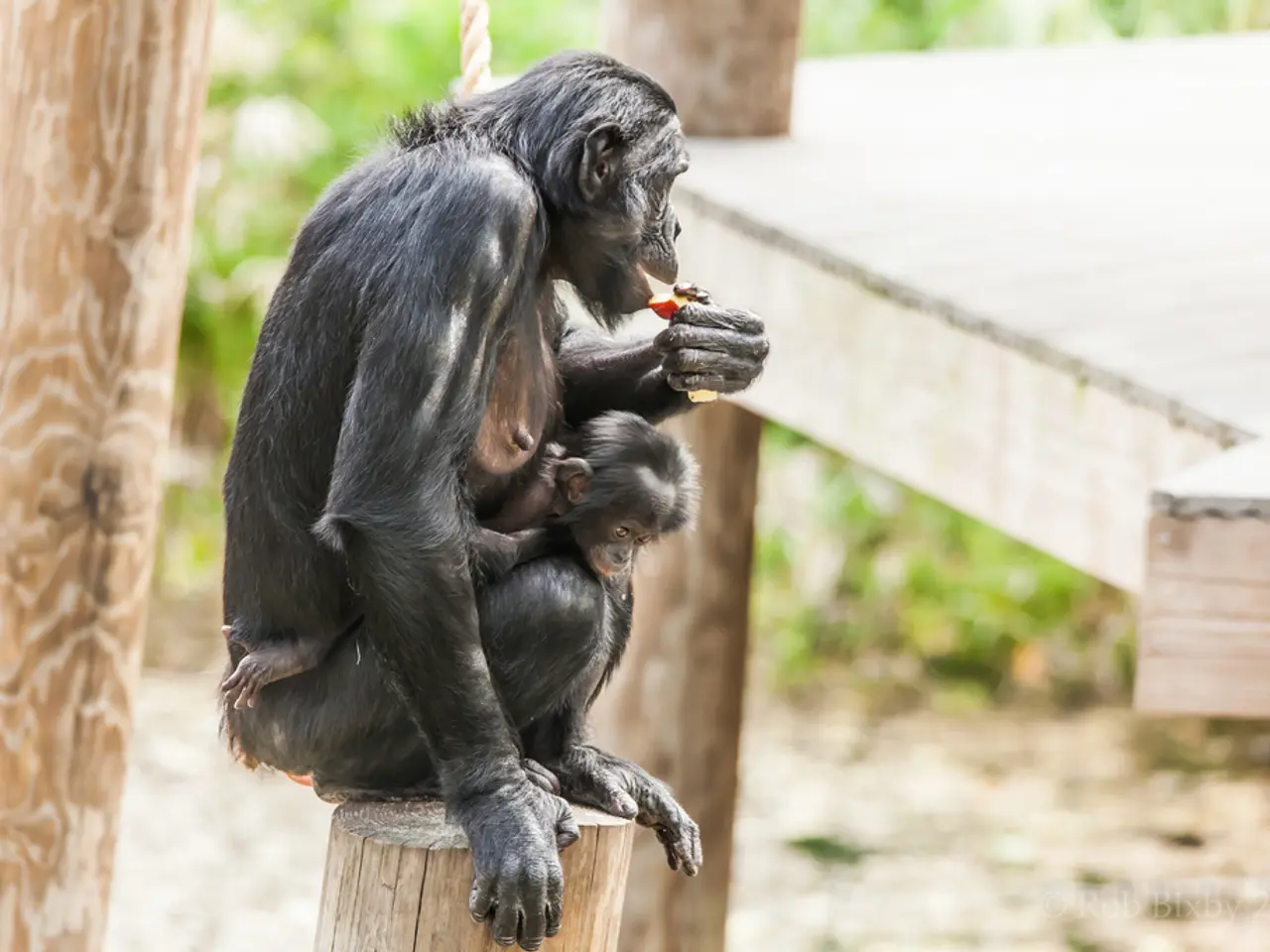Stone Tools Selection Shows Commonalities Between Contemporary Chimpanzees and Ancient Humans
In a groundbreaking study published in the Journal of Human Evolution, researchers have delved into the similarities and differences between the tool usage of modern chimpanzees and early humans, providing valuable insights into the evolutionary journey that led to the development of complex technology.
The research, led by David Royce Braun and colleagues, focused on the selective rock tool use among chimpanzees in Bossou, Guinea. By introducing various rock types unknown to the animals, the team was able to observe the chimpanzees' choices based on mechanical properties rather than visible features.
Modern chimpanzees demonstrate a remarkable ability to choose rocks for nut-cracking based on their mechanical properties. They seem to select harder stones for hammers and softer stones for anvils, suggesting an understanding of their specific properties for specific purposes. This behaviour is a significant insight into their technology use, as chimpanzees also demonstrate selective tool use in their termite fishing activities.
In contrast, Oldowan hominins, who lived around 2.5 million years ago, produced systematic stone tool industries involving intentional selection and modification of stones. Their tool use marks a clear technological step beyond the opportunistic or minimally modified tools seen in chimpanzees. Oldowan tools involved deliberate percussion flaking techniques to shape stones, reflecting advanced cognitive and motor skills relative to nonhuman primates.
The study reveals important differences in technology use between nonhuman primates and ancient hominins. Chimpanzees exhibit choice and some tool modification, but their tool manufacture remains largely unstandardized and limited to natural materials. In contrast, Oldowan hominins demonstrate intentional tool production and refinement, indicative of more complex cognitive processes involving planning, foresight, and cultural transmission.
The chimpanzee behaviour provides a living model of primitive tool use and selection but lacks the transformative aspect of technology creation that defines hominin evolution. The study underscores the uniquely human capacity for technological innovation and cumulative culture evident since at least the Oldowan period.
The results of this comparative approach enrich our understanding of how ancient hominins progressed beyond nonhuman primate tool behaviours towards complex technology that shaped human evolution. The research also suggests that there may have been an element of information sharing between ancient hominins and primates in the distant past, offering intriguing possibilities for further exploration.
- This groundbreaking study on tool usage in early humans and modern chimpanzees, published in the Journal of Human Evolution, sheds light on the evolutionary path of biological processes associated with science, technology, and cognitive development.
- The researchers, led by David Royce Braun, observed the selective rock tool use among chimpanzees in Bossou, Guinea, suspecting that they may exhibit similar technology use as early humans.
- The study reveals that while modern chimpanzees demonstrate remarkable stone selection for nut-cracking, they lack the intentional tool production and refinement seen in Oldowan hominins, showing significant evolutionary distinctions in medical-conditions related to cognitive development.
- As technology continues to advance, the comparison between the tool use of modern chimpanzees and early humans serves as a crucial reference point for understanding the roots of human evolution and the unique capacity for technological innovation that differentiates us from other species in the realm of science and biology.




